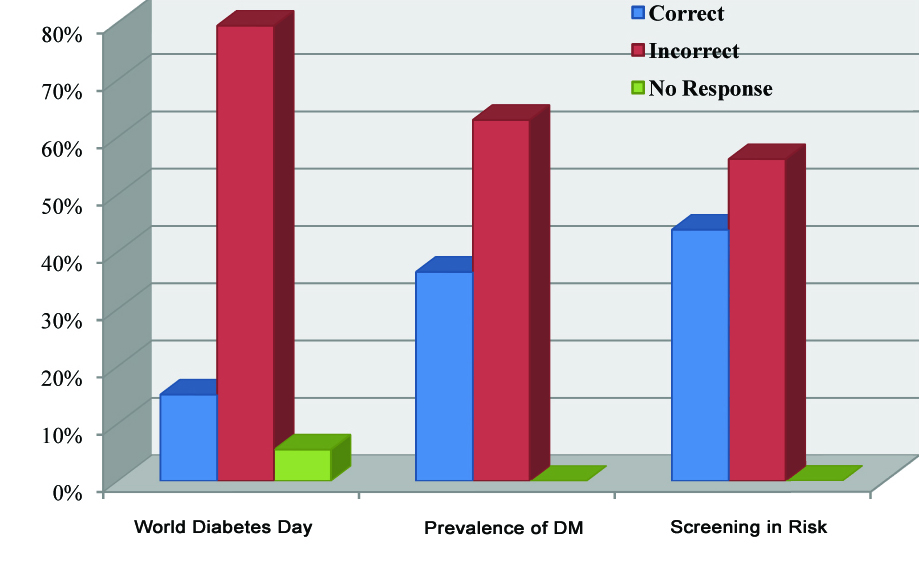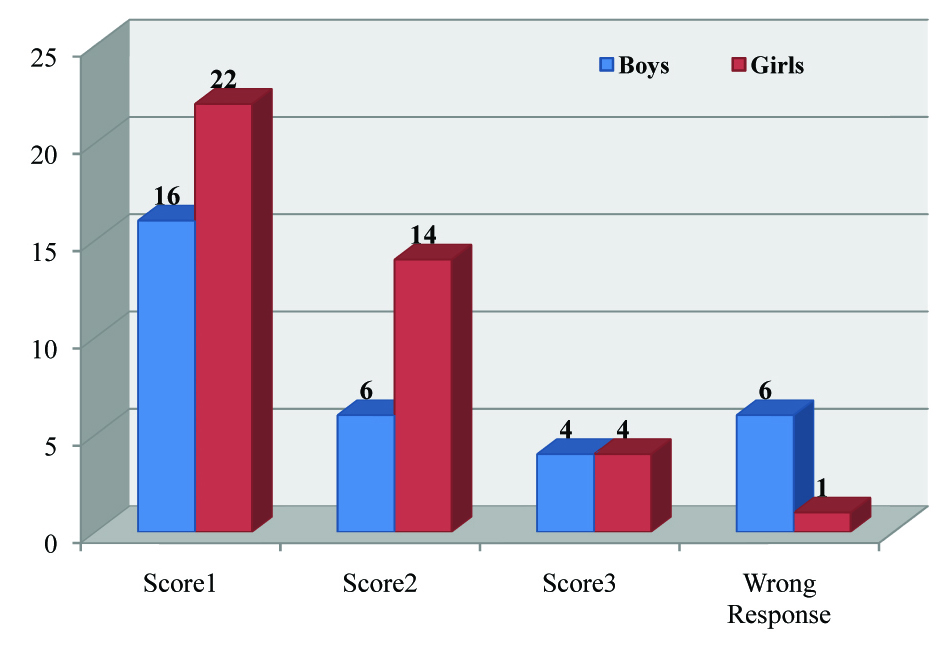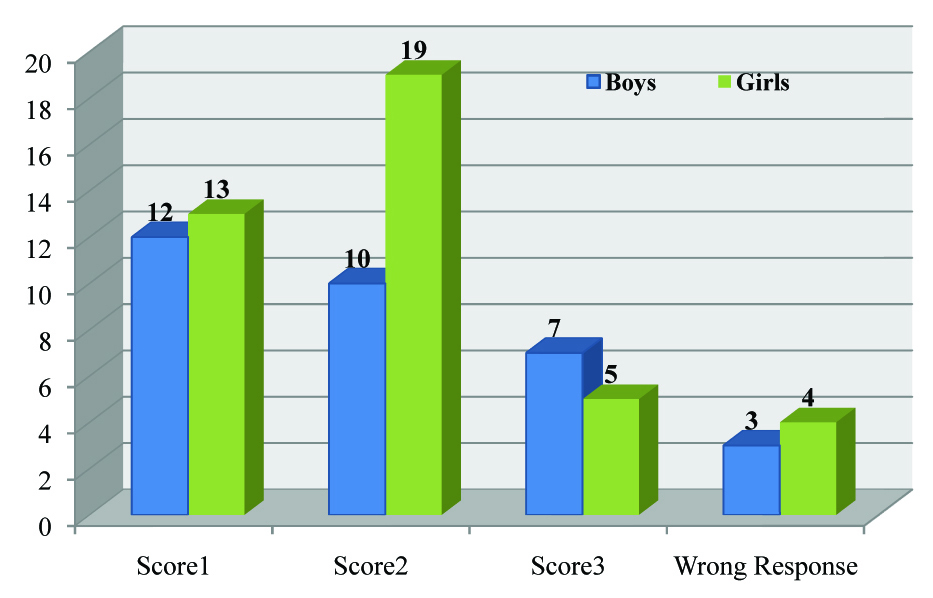Knowledge and Awareness of Diabetes and Diabetic Ketoacidosis (DKA) Among Medical Students in a Tertiary Teaching Hospital: An Observational Study
Harmanjit Singh1, Pugazhenthan Thangaraju2, Suresh Kumar3, U Aravindan4, Hariharan Balasubramanian5, Tamil Selvan6
1 Senior Resident, Department of Pharmacology, AIIMS, New Delhi, India.
2 Medical Officer, Central Leprosy Teaching and Research Institute, Chengalpattu, Tamilnadu, India.
3 Medical Officer, Nallur PHC, Tamilnadu, India.
4 Junior Statistical Officer, Central Leprosy Teaching and Research Institute, Chengalpattu, Tamilnadu, India.
5 MBBS Student, Annapoorna Medical College, Salem, Tamilnadu, India.
6 Assistant Professor, Department of Computer and Statistics, SKP Engineering College, Thiruvanaamalai, Tamilnadu, India.
NAME, ADDRESS, E-MAIL ID OF THE CORRESPONDING AUTHOR: Dr. Harmanjit Singh, Senior Resident, Department of Pharmacology, AIIMS, New Delhi, India.
Phone: 9968118472,
E-mail: harman_gmcp@yahoo.com
Background: The management of Diabetes Mellitus and its important complication Diabetic Ketoacidosis is very crucial in today’s world where the prevalence of Diabetes is very high. Medical students are the pillars of our future healthcare system and it is important to evaluate and update their knowledge and awareness regarding these both conditions.
Materials and Methods: This study was a cross-divtional; Questionnaire based observational study conducted in a tertiary care hospital. The respondents were final year MBBS students of that college. Study instrument was a self developed, pre-validated, semi-structured questionnaire.
Results: A total of 73 questionnaires were considered for analysis, giving a response rate of 90.12% with 43.83% and 56.16% were male and female respondents respectively. About 81.25% and 90.24% of male and female respondents gave correct answer to question related to the best indicator of glycemic control. Lack of knowledge was seen regarding the world Diabetes day. Approximately 37% of the respondent’s parents were diabetic. Only 12 out of 73 respondents were aware about the factors leading to DKA. 8 out of 73 were aware about investigations to be done in DKA. Around 43.84% of responders knew regarding the proper screening duration in person with risk of diabetes.
Conclusion: From the study it was concluded that most of the students have basic knowledge regarding diabetes mellitus, its clinical features and management etc but only 50 % of the respondent were aware about DKA and further teaching and post teaching evaluation are needed in future direction.
Awareness,Diabetes mellitus,Diabetic Ketoacidosis,Knowledge,MBBS Students
Introduction
Diabetes mellitus (DM) is a major non-communicable disease and presently, a serious public health problem as the prevalence of diabetes mellitus is increasing and the number of persons with the disease will double by 2025 [1,2]. The knowledge, education and awareness of the diabetes among medical students are essential because in future they are going to tackle this major public health problem [3]. The purpose of the study was to initially evaluate the knowledge regarding DKA and after analysis of the data necessary steps would be taken to improve the knowledge where the students were deficient in the knowledge of DKA as it is a acute complication which could be managed effectively when a proper clinical diagnosis is made. Diabetic ketoacidosis (DKA) is a life-threatening condition that can occur when there is a complete lack of insulin, as in type 1 (insulin-dependent) diabetes mellitus (DM), or inadequate insulin levels associated with stress or severe illness in either type 1 or type 2 (non–insulin dependent) DM [4–7]. DKA was originally described by Dreschfeld in 1886; until insulin was discovered in 1922, the mortality rate of this illness was almost 100%. Over the past 20 years (1986-2006), there has been no reduction in the DKA mortality rates, which remained between 3.4% and 4.6% [8]. Between 20% and 30% of cases of DKA occur in patients with newly diagnosed DM [4]. Most deaths occur from complications of cerebral edema. This sequelae of DKA cannot be predicted with certainty for any given patient [7–10]. Other complications associated with DKA are Adult respiratory distress syndrome (ARDS) and Hyperchloremic acidosis. The incidence of DKA is 0.2 per patient year with type 1-DM [11]. DKA tends to be more common in younger patients [10] and is still the major cause of death in children with diabetes. Medical students are the pillars of our future healthcare system and it is important to evaluate and update their knowledge and awareness regarding these both conditions. This study was aimed to evaluate the knowledge and awareness of the M.B.B.S students regarding the DM and DKA.
Materials and Methods
Sample Size and Sampling Method
A sample size of 81 was calculated assuming a prevalence of 70% for knowledge and awareness of Diabetes and Diabetic Ketoacidosis (DKA) among medical students, a 95% confidence interval and a sample error of 10%. Convenience sampling was used to draw the sample for this survey. This cross-sectional study was conducted on final year MBBS students in a peripheral teaching medical college and hospital in Northern Tamilnadu, Southern India during July 2013. The participants were assured that the outcome would not be used for performance appraisal of the students. To maintain the confidentiality, the personal information of the participants was not disclosed (only gender of the students was mentioned). The total respondents in this survey were 81, out of which 73 respondent questionnaires were taken for analysis. The rest 8 questionnaires were omitted for not properly filled questions. The purpose of the study was explained to the respondents and informed verbal consent was taken from all the respondents. We structured a questionnaire by reviewing relevant literature with the intent to derive information on the knowledge of DM and DKA. The questionnaire was validated by administering it to 30 potential participants who were not included in the study (to avoid bias). The questionnaire was also cross checked by a preventive medicine consultant and dialectologist consultant before administering to the students. The questions consist of general information on diabetes and diabetic ketoacidosis, regarding signs, symptoms and management. It also contained question on screening, gestational diabetes and occurrence of DM in family. The respondents were given sufficient time to fill the questionnaire. Every participant returned the questionnaire and there were no non responders. The responses of the participants were evaluated by giving scores for multiple option questions and correct and incorrect responses for others.
Statistical Analysis
Data were analyzed using Statistical software package (SPSS), version 20.0. z-test was used to compare the result among two groups. p-value less than 0.05 was considered as statistical significance to compare the effect of categorical data between the two groups
Results
In our study the total male respondents were 32 with percentage contributing around 43.83% and female contributors were 41 with 56.16% accounting for the maximum involvement.
[Table/Fig-1] shows the knowledge regarding the general information pertaining to diabetes.
Basic knowledge regarding diabetes mellitus among participants C-correct response; IC-Incorrect response
| Questions | Responses | No responses |
|---|
| Boys (%) | Girls (%) |
|---|
| C | IC | C | IC |
|---|
| 1. Diabetes is related to endocrine pancreas. | 28 (87.5%) | 4 (12.5%) | 38 (92.68%) | 3 (7.32%) | - |
| 2. Classical symptoms | 27 (84.38%) | 5 (15.62%) | 40 97.56%) | 1 (2.44%) | - |
| 3. A cut off value of Fasting Blood Sugar (FBS) for diagnosing Diabetes Mellitus | 22 (68.75) | 10 (31.25%) | 27 (65.85) | 14 (34.15%) | - |
| 4. HbA1c best indicator of Glycemic control | 26 (81.25%) | 6 (18.75%) | 37 (90.24%) | 4 (9.76%) | - |
| 5. Meaning of Post Prandial Blood Sugar (PPBS) | 26 (81.25%) | 65 (15.63%) | 21 (51.22%) | 20 (48.78%) | 1 |
In this, the correct response made by girls is more than the boys in the questions related to part of pancreas involved in pathology, classical symptoms and glycemic control indicator.
[Table/Fig-2] shows the response given by the two groups for the questions related to diabetic ketoacidosis (DKA). Girls gave the maximum correct responses for the questions involving gestational diabetes mellitus (GDM), ICU management of DKA, usage of short acting insulin for management and regarding complication of diabetes mellitus. [Table/Fig-3] is showing the important responses which were significant statistically.
The responses regarding the questions pertaining to DKA
| Questions | Responses | No responses |
|---|
| Boys (%) | Girls (%) |
|---|
| C | IC | C | IC |
| 1. DKA is not an acute complication of DM | 22 (68.75) | 10 (31.25) | 38 (92.68) | 2 (4.88) | 1 |
| 2. DKA is seen in both type 1 and 2. | 14 (43.75) | 18 (56.25) | 16 (39.02) | 25 (60.98) | - |
| 3. Decreased blood glucose is not a component of DKA | 26 (81.25) | 6 (18.75) | 29 (70.73) | 12 (29.27) | - |
| 4. Electrolyte depleted in DKA is potassium | 16 (50) | 14 (43.75) | 14 (34.15) | 25 (60.97) | 4 |
| 5. Fluid should be replaced is NS and DNS | 17 (53.13) | 14 (43.75) | 14 (34.15) | 26 (63.41) | 2 |
| 6. Short acting insulin is used in DKA | 14 (43.75) | 18 (56.25) | 25 (60.98) | 15 (36.58) | 1 |
| 7. I.V is the mode of insulin administration | 16 (50) | 16 (50) | 13 (31.71) | 26 (63.41) | 2 |
| 8. DKA is managed in ICU | 26 (81.25) | 6 (18.75) | 38 (92.68) | 3 (7.32) | - |
| 9. Insulin and IV fluids were the first line management | 22 (68.75) | 10 (31.25) | 27 (65.85) | 14 (34.15) | - |
| 10. GDM information | 22 (68.75) | 9 (28.13) | 30 (73.17) | 10 (24.39) | 2 |
Statistically significant responses given by the participants
| Questions | Correct Responses | z-test value | p-value |
|---|
| Boys | Girls |
|---|
| 1. Classical symptoms | 27 | 40 | -2.035 | 0.041 |
| 2. Meaning of PPBS | 26 | 21 | 2.658 | 0.008 |
| 3. DKA is not an acute complication of DM | 22 | 38 | -2.652 | 0.008 |
C-correct response; IC-Incorrect response; DM-diabetes mellitus; DKA-Diabetic ketoacidosis; NS-normal saline; DNS-dextrose normal saline; ICU-intensive care unit; IV-intravenous fluid; GDM-gestational diabetes mellitus.
[Table/Fig-4] shows the percentage of the participant gave the correct response in the question related to the world diabetes day. It was seen that 79.45% of the total participant gave the wrong answer. The approximate prevalence of type 2 diabetes among the respondent’s parents (either of the parent), was found to be 36.99%. In this, around 13 of the female respondent’s parents and 14 of the male respondent’s parent were diabetic. The correct and incorrect responses given by the total respondents in relation to the question regarding the screening duration of the healthy persons with risk factor with the age of >45 years. Only 43.84% of the total respondents gave the correct responses. In this study, around 21 female and 11 male respondents gave correct responses.
Showing responses on awareness of world diabetes day, prevalence of diabetes among respondent’s parents and screening duration in risk people

[Table/Fig-5] shows the various distributions of the multiple responses for the question regarding investigations done in DKA. Score 1 is given to each options in the multiple choice questions. Maximum score was 3.The figure shows that 7 of the respondent gave incorrect responses. Pertaining to score 1, 16 male and 22 female gave the correct response. For score 2, 6 male and 14 female gave the correct responses. For score 3, equal correct responses were seen in both the groups i.e. 4.
Showing various investigations to be done in DKA and responses given in two groups

[Table/Fig-6] shows the various distributions of the multiple responses for the question regarding factors leading to DKA. Score 1 was given to each options in the multiple choice questions. Maximum score was 3. Only 7 of the total respondents gave the incorrect response. A total of 25 respondents (12 male and 13 female) obtained a score of 1, 29 respondents (10 male and 19 female) obtained a score of 2 and Only 12 respondents obtained a score 3 (7 male and 5 female).
Showing factors leading to DKA and the responses in the two groups

Discussion
In our best knowledge this is the first study done for evaluating the knowledge regarding diabetic ketoacidosis and its importance. The participants in the study were final year MBBS students who have completed the theory aspect of physiology, pathology and pharmacology regarding diabetes and are going to be exposed to the clinical settings where they will find a number of diabetic patients presenting with both acute and chronic complications. From the analysis of the data regarding general awareness of diabetes, there was a statistically significant difference in between two groups in questions related to classical symptoms (p=0.041) and meaning of PPBS( p=0.008). Regarding awareness of world diabetes day only 15.07% of the total respondent were able to give correct answer. So even though DM is known to everyone as it is the important topic in every medical, general, social area, there was a lack in awareness among the final year MBBS students.
Conclusion
From this study it was concluded that although most of the students had basic knowledge regarding diabetes mellitus, its clinical features and management etc but only 50 % of the respondents were aware about the general features and management of DKA, an important complication of diabetes mellitus.
[1]. Wild S, Roglic G, Green A, Sicree R, King H, Global prevalence of diabetes: Estimates for the year 2000 and projections for 2030 Diabetes Care 2004 27:1047-53. [Google Scholar]
[2]. Al Wadaani FA, The knowledge attitude and practice regarding diabetes and diabetic retinopathy among the final year medical students of King Faisal University Medical College of Al Hasa region of Saudi Arabia: a cross sectional survey Niger J Clin Pract 2013 16(2):164-8. [Google Scholar]
[3]. Trepp R, Wille T, Wieland T, Reinhart WH, Diabetes-related knowledge among medical and nursing house staff Swiss Med Wkly 2010 140(25-26):370-5. [Google Scholar]
[4]. Bell DS, Alele J, Diabetic ketoacidosis: Why early detection and aggressive treatment are crucial Postgrad Med 1997 101:193-204. [Google Scholar]
[5]. Diabetic Ketoacidosis Treatment & Management Available from http://emedicine.medscape.com/article/118361-treatment. Accessed on 12-10-2013 [Google Scholar]
[6]. Diabetic ketoacidosis screening, prevention and management bibliography. Available from https://www.aamc.Org/initiatives/cei/ae4q/263370/diabetic ketoacidosis screening prevention and management.html. Accessed on 12-10-2013 [Google Scholar]
[7]. Savage MW, Dhatariya KK, Kilvert A, Rayman G, Rees JA, Courtney CH, Joint British Diabetes Societies guideline for the management of diabetic ketoacidosis Diabet Med 2011 28(5):508-15. [Google Scholar]
[8]. Gouni-Berthold I, Krone W, Diabetic ketoacidosis and hyperosmolar hyperglycemic state Med Klin (Munich) 2006 101(1):100-5. [Google Scholar]
[9]. Magee MF, Bhatt BA, Management of decompensated diabetes. Diabetic ketoacidosis and hyperglycemic hyperosmolar syndrome Crit Care Clin 2001 17(1):75-106. [Google Scholar]
[10]. Edge JA, Management of diabetic ketoacidosis in childhood Br J Hosp Med 1996 55:508-12. [Google Scholar]
[11]. Michael AP, Diabetic Ketoacidosis-case study Physician Assistant 2001 25(11):42-8. [Google Scholar]